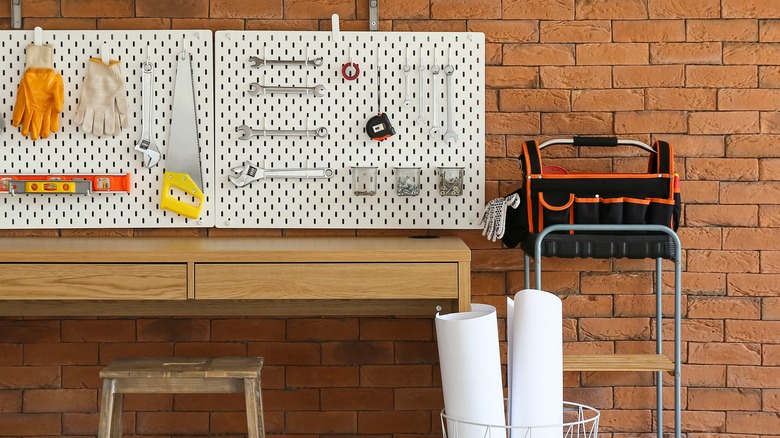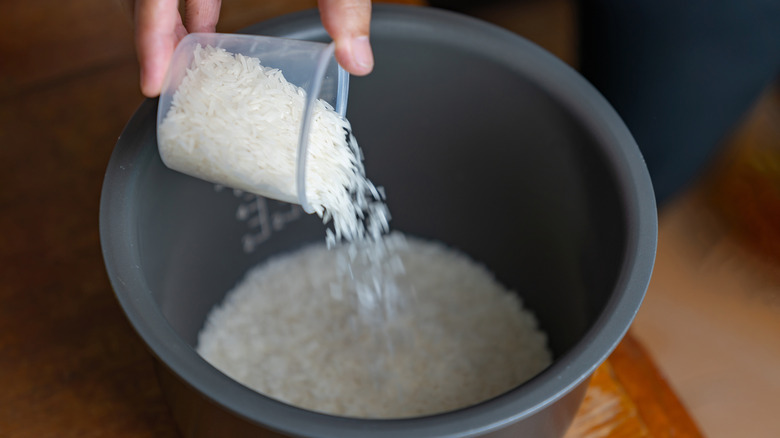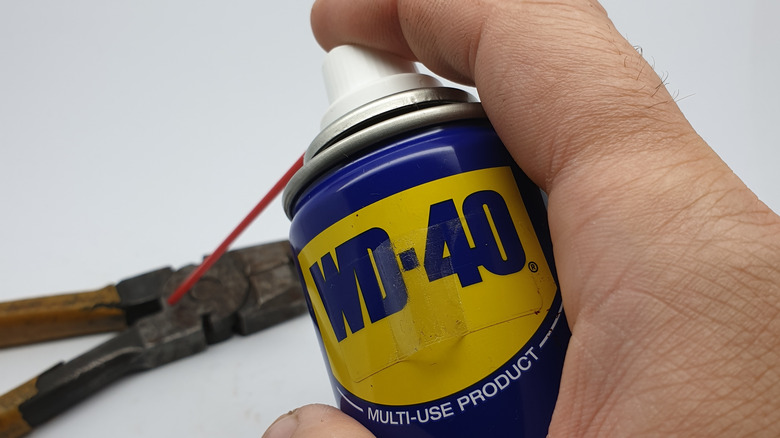Use Uncooked Rice To Keep Your Tools Rust-Free
When most of us think of rice, we imagine eating the cooked stuff. But there are plenty of uses for uncooked rice outside of being a part of your diet. One surprising function is it can help keep your tools rust-free. When you store your tools in uncooked rice, the grains will soak up any moisture that may cause them to oxidize.
One method for doing this is placing a handful of rice inside your toolbox. If you don't want the rice to be loose, pour the same amount into the foot of some pantyhose, cut where the knee would be, and tie the excess fabric into a knot. You can place this little rice bundle wherever you store the items you don't want to rust. If you don't own a toolbox, try filling a canister with rice and placing the head of your tools inside, ensuring the metal is submerged in the grain.
The science behind it
Most tools we use in our homes today are made from steel, which contains iron. Rust occurs when iron gets wet or comes in contact with moisture. The oxygen in water reacts with the metal to create iron oxide, a.k.a. rust. Even if your tools don't get splashed with water, they can still rust when exposed to humidity. Luckily, rice is able to suck up molecules of water that it comes in contact with. This is called hygroscopicity. Uncooked rice has yet to soak up any moisture, so it has high hygroscopic abilities. It can even suck up moisture in the air. That's why storing your tools in rice is especially useful in tool sheds or garages where it tends to be damp.
If your tools do get rusty, there are ways to restore them instead of tossing them out. You can use sandpaper, vinegar and salt, baking soda, or oxalic acid to scrub away or remove the rust. But this can compromise their quality, so it's better to prevent them from getting rusty in the first place.
Other ways to prevent rust
Using uncooked rice to draw moisture away from your tools isn't the only way to prevent them from getting rusty. There are several preventative methods you can use in conjunction with each other. The first tip is to keep your toolbox free of dust. This is because dust can actually be a magnet for moisture. So, you'll want to wipe your tools down after using them and keep your tool storage area and workplaces as tidy as you can. Silica gel packs are also handy when it comes to wicking away wetness. Just toss some in your toolbox.
If the area where your tools are kept is particularly humid, you might want to use a dehumidifier to keep dampness under control. Spraying your tools down with WD-40 will also ward off rust, as will painting your tools with chrome or sealants. Repeat this process every so often to keep your tools in tip-top shape.


